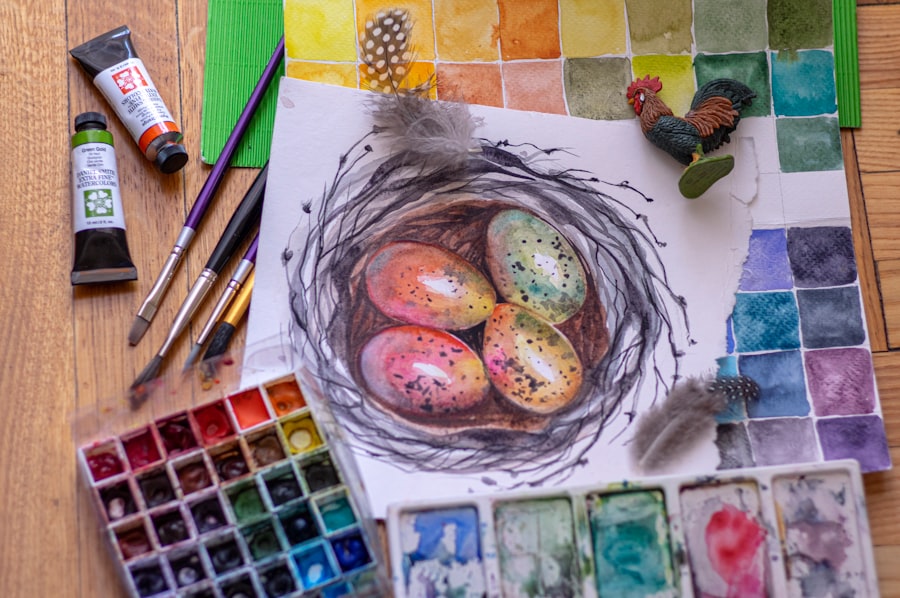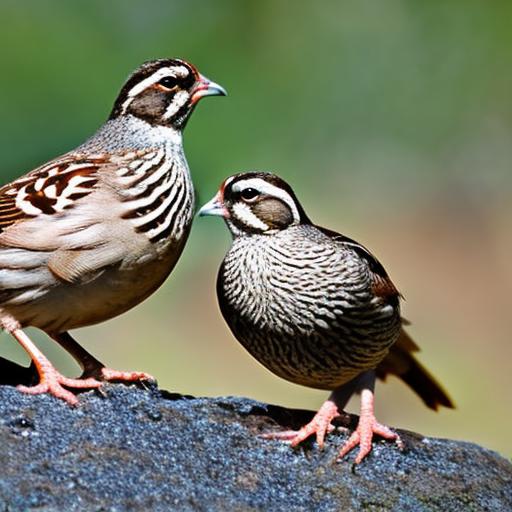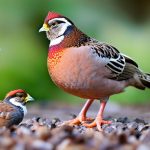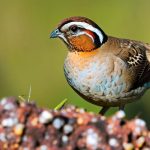Quail are small birds that are highly sensitive to extreme temperatures, especially heat. It is important for quail owners to understand the heat tolerance of these birds in order to provide them with the best care and environment. Quail are most comfortable in temperatures ranging from 60 to 75 degrees Fahrenheit, and they can start to experience heat stress when temperatures rise above 85 degrees Fahrenheit. When exposed to high temperatures, quail can become stressed, which can lead to decreased egg production, poor growth, and even death if not properly managed. Understanding the heat tolerance of quail is crucial for ensuring their well-being and productivity.
Quail are particularly susceptible to heat stress due to their small size and high metabolic rate. Unlike larger birds, quail have a limited ability to regulate their body temperature, making them more vulnerable to extreme heat. When quail are exposed to high temperatures, they may exhibit signs of heat stress such as panting, wing spreading, reduced activity, and decreased feed intake. It is important for quail owners to be aware of these signs and take proactive measures to prevent heat stress in their birds. By understanding the heat tolerance of quail, owners can make informed decisions about how to best care for their birds during hot weather.
Key Takeaways
- Quail can tolerate heat up to 90°F, but above this temperature, they may experience heat stress.
- Providing shade and shelter, such as trees, shrubs, and artificial covers, can help quail regulate their body temperature.
- Evaporative cooling methods, such as misters or wetting the ground, can help lower the ambient temperature for quail.
- Proper ventilation in quail housing is essential to prevent heat buildup and maintain air circulation.
- Offering cool treats like fruits and vegetables, as well as fresh, cool water, can help quail stay hydrated and cool during hot weather.
- Monitoring quail behavior for signs of heat stress, such as panting, wing spreading, and reduced activity, is crucial for early intervention.
- Creating a heat management plan that includes shade, shelter, cooling methods, ventilation, and hydration is essential for ensuring the well-being of quail during hot weather.
Providing shade and shelter for quail
One of the most effective ways to help quail cope with high temperatures is by providing them with adequate shade and shelter. Shade is essential for protecting quail from direct sunlight and reducing the risk of heat stress. Quail enclosures should be equipped with natural or artificial shade structures such as trees, shrubs, or tarps to create a cool and comfortable environment for the birds. Additionally, providing shelter such as wooden or metal shelters can offer quail a place to escape from the sun and rest in a cooler area. It is important for quail owners to ensure that the shade and shelter provided are sufficient for the number of birds in the enclosure and that they are positioned in a way that maximizes coverage throughout the day.
In addition to natural shade and shelter, quail owners can also use various cooling methods such as misters or fans to further enhance the comfort of their birds. Misters can be installed in the quail enclosure to create a fine spray of water that helps lower the ambient temperature and provide relief from the heat. Similarly, fans can be used to improve air circulation and reduce the perceived temperature for quail. By providing adequate shade and shelter, as well as utilizing cooling methods, quail owners can significantly reduce the risk of heat stress and create a more comfortable environment for their birds during hot weather.
Using evaporative cooling methods for quail
Evaporative cooling methods can be highly effective in helping quail cope with high temperatures. One popular method is using evaporative cooling pads or systems in the quail enclosure. These pads are designed to absorb water and create a cool surface for the birds to rest on. As the water evaporates from the pads, it helps lower the temperature in the surrounding area, providing relief for the quail. Evaporative cooling systems can be especially beneficial in hot and dry climates where traditional cooling methods may not be as effective.
Another evaporative cooling method that can be used for quail is providing them with wet surfaces or materials to stand or lay on. This can include wetting the ground or providing wet towels or cloths for the birds to rest on. The evaporation of water from these surfaces helps cool the surrounding air and provides a comfortable area for the quail to escape the heat. By utilizing evaporative cooling methods, quail owners can create a more favorable environment for their birds during hot weather and reduce the risk of heat stress.
Ensuring proper ventilation for quail
Proper ventilation is essential for maintaining a healthy and comfortable environment for quail, especially during hot weather. Good ventilation helps remove excess heat, moisture, and airborne contaminants from the quail enclosure, creating a more comfortable and safe living space for the birds. Ventilation can be achieved through natural means such as windows, vents, or open doors, as well as through mechanical means such as fans or exhaust systems. It is important for quail owners to ensure that their enclosures are well-ventilated to prevent the buildup of heat and humidity, which can contribute to heat stress in the birds.
In addition to providing adequate ventilation, quail owners should also consider the placement of their enclosures to maximize airflow and reduce heat buildup. Enclosures should be positioned in areas with good air circulation and away from direct sunlight to help maintain a cooler environment for the birds. Proper ventilation is crucial for preventing heat stress in quail and promoting their overall health and well-being.
Offering cool treats and water for quail
During hot weather, it is important for quail owners to provide their birds with cool treats and ample access to fresh water to help them stay hydrated and cool. Cool treats such as frozen fruits or vegetables can be offered to quail as a refreshing snack that helps lower their body temperature. Additionally, providing access to cool watermelon or cucumber can also help quail stay hydrated and cool during hot weather. These treats not only provide essential nutrients but also help quail cope with high temperatures and reduce the risk of heat stress.
In addition to cool treats, ensuring that quail have access to fresh, cool water at all times is crucial for preventing dehydration and heat stress. Quail should have access to multiple water sources throughout their enclosure, and these sources should be checked regularly to ensure they are clean and filled with cool water. Providing water in shaded areas can also help keep it cooler for longer periods, making it more appealing for the birds. By offering cool treats and water, quail owners can help their birds stay comfortable and healthy during hot weather.
Monitoring quail behavior for signs of heat stress

Monitoring quail behavior is essential for identifying signs of heat stress and taking proactive measures to prevent its negative effects on the birds. During hot weather, quail owners should pay close attention to their birds’ behavior and look out for signs such as panting, wing spreading, reduced activity, or decreased feed intake. These behaviors indicate that the quail may be experiencing heat stress and require immediate attention.
In addition to observing their behavior, quail owners should also monitor their birds’ physical condition, such as checking for signs of dehydration or overheating. This can include checking their droppings for consistency and color, as well as feeling their skin for signs of excessive dryness or warmth. By regularly monitoring their behavior and physical condition, quail owners can quickly identify signs of heat stress and take appropriate measures to help their birds stay cool and comfortable.
Creating a heat management plan for quail
Creating a comprehensive heat management plan is crucial for ensuring the well-being of quail during hot weather. This plan should include strategies for providing shade and shelter, utilizing evaporative cooling methods, ensuring proper ventilation, offering cool treats and water, and monitoring quail behavior for signs of heat stress. Quail owners should also establish protocols for responding to heat stress in their birds, including steps for providing immediate relief such as moving them to a cooler area or offering electrolyte supplements.
Furthermore, it is important for quail owners to stay informed about local weather forecasts and plan ahead for extreme temperatures by implementing additional cooling measures when necessary. This may include increasing the frequency of misting or adding extra shade structures to provide more coverage for the birds. By creating a comprehensive heat management plan, quail owners can effectively mitigate the risks of heat stress in their birds and ensure they remain healthy and productive even during hot weather.
In conclusion, understanding the heat tolerance of quail is essential for providing them with proper care during hot weather. By providing adequate shade and shelter, utilizing evaporative cooling methods, ensuring proper ventilation, offering cool treats and water, monitoring behavior for signs of heat stress, and creating a comprehensive heat management plan, quail owners can effectively mitigate the risks of heat stress in their birds and promote their overall well-being. With proactive measures and careful attention to their needs, quail can thrive even in high temperatures and continue to be a valuable part of any poultry operation.
When it comes to keeping quail cool in hot weather, it’s essential to provide adequate ventilation and shade in their enclosure. This ensures that they can regulate their body temperature and stay comfortable. For more tips on creating the ideal environment for your quail, check out Poultry Wizard’s article on what vegetables do quails eat. Understanding their dietary needs is crucial for their overall well-being, and this article offers valuable insights into providing a balanced and nutritious diet for your quail.
FAQs
What are some ways to keep quail cool in hot weather?
Some ways to keep quail cool in hot weather include providing shade, ensuring proper ventilation in their housing, and offering cool water for them to drink.
Why is it important to keep quail cool in hot weather?
Quail are sensitive to high temperatures and can suffer from heat stress, which can lead to decreased egg production, poor growth, and even death. Keeping quail cool in hot weather is essential for their health and well-being.
What are some signs that quail may be suffering from heat stress?
Signs that quail may be suffering from heat stress include panting, lethargy, decreased feed intake, and reduced egg production. It’s important to take action to cool them down if you notice these signs.
How can I provide shade for my quail in hot weather?
You can provide shade for your quail by using natural shade from trees or shrubs, or by creating artificial shade using tarps, umbrellas, or other materials. It’s important to ensure that the shade is well-ventilated to allow for air flow.
What should I do if I suspect my quail are suffering from heat stress?
If you suspect your quail are suffering from heat stress, you should immediately take steps to cool them down. This may include providing additional shade, offering cool water for them to drink, and ensuring proper ventilation in their housing. If the symptoms persist, it’s important to seek veterinary care.
Meet Walter, the feathered-friend fanatic of Florida! Nestled in the sunshine state, Walter struts through life with his feathered companions, clucking his way to happiness. With a coop that’s fancier than a five-star hotel, he’s the Don Juan of the chicken world. When he’s not teaching his hens to do the cha-cha, you’ll find him in a heated debate with his prized rooster, Sir Clucks-a-Lot. Walter’s poultry passion is no yolk; he’s the sunny-side-up guy you never knew you needed in your flock of friends!







